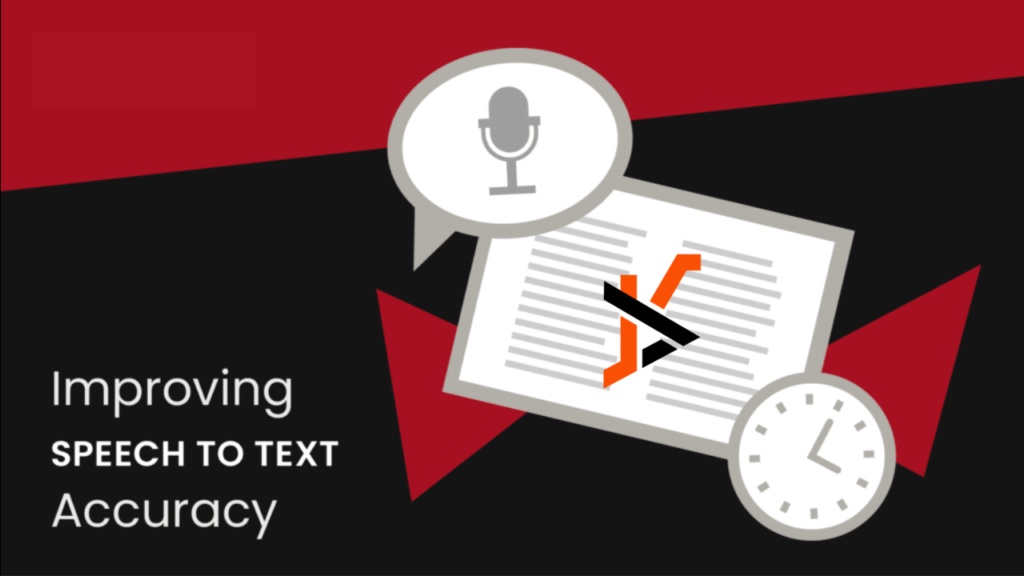Welcome to the world of transcription, where the quest for accuracy is both an art and a science. In this guide, we’ll dive into the nitty-gritty details of achieving top-notch accuracy in audio-to-text transcription. Whether you’re a seasoned transcriptionist or a beginner navigating the waves of spoken words, these pro tips will undoubtedly level up your transcription game. Let’s unravel the secrets to mastering the art of precision in turning spoken words into text.
Choosing the Right Audio Format
Let’s kick things off with the backbone of accurate transcription – the audio itself. The quality of your audio recording can make or break the accuracy of the transcription process. Opt for formats like WAV or FLAC that retain more audio data, ensuring a higher fidelity transcription. Adjusting bit rates and sample rates appropriately can also have a significant impact. Remember, a crystal-clear recording is the first step toward a flawless transcription. Use this tool, which has a high accuracy rate and accepts different formats.
Clear and Consistent Pronunciation
Now, onto the spoken word symphony. Clarity in pronunciation is the unsung hero of accurate transcription. Enunciate your words, maintain a consistent pace, and be mindful of your articulation. Background noise can be the sneaky villain here, so find a quiet space to minimize distractions. Pro tip: taking a moment to articulate your thoughts clearly enhances transcription accuracy and improves overall communication.
Speaker Identification and Labeling
Accurate identification is the glue that holds everything together in the world of multiple speakers. Clearly label different speakers, especially in group discussions or interviews. Take advantage of speaker diarization tools offered by advanced transcription services. These tools automatically identify and label speakers, saving you time and ensuring a more accurate transcription.
Proper Punctuation and Formatting
Punctuation is the punctuation of clarity. Incorporate natural pauses, and remember to breathe between sentences. When needed, provide contextual information to guide the transcriptionist. Transcription software often interprets pauses as punctuation so that a deliberate pause can make all the difference. Remember to underestimate the power of well-placed commas and periods; they shape the rhythm and flow of your spoken words.
Contextual Understanding
Transcription isn’t just about typing what’s heard; it’s about understanding the context. Familiarize yourself with the subject matter if you’re a transcriptionist, and research industry-specific terms beforehand. If you’re the speaker, ensure that complex terms are pronounced clearly. A mutual understanding of the context provides a more accurate and meaningful transcription.
Quality Transcription Software
Your choice of transcription software can be a game-changer. Opt for reliable tools that offer features like AI assistance and real-time feedback. These tools not only enhance accuracy but also speed up the transcription process. Take the time to explore different software options, read reviews, and choose one that aligns with your specific needs.
Proofreading and Editing Techniques
Even the best transcribers make occasional slip-ups. That’s where proofreading and editing come into play. After the initial transcription, take a break before revisiting your work. Fresh eyes are more likely to catch errors. Consider involving a second set of eyes for a collaborative proofreading approach. Two heads are often better than one, especially when striving for perfection.
Continuous Learning and Feedback
In the dynamic world of transcription, the learning journey never truly ends. Seek feedback on your transcriptions and be open to constructive criticism. Online communities and resources can provide valuable insights and update you on the latest trends and techniques. Embrace the mindset of continuous improvement, and watch your transcription skills soar.
Transcribing Your Lecturers: Why This is a Beneficial Task
Have you ever considered recording and transcribing your lectures? While this task is often overlooked, it can be very advantageous for your studies. What’s more, with automated transcription tools, it’s a task that doesn’t require any effort or manual work from you. It can be completed quickly and used time and time again. Let’s examine why you want to transcribe your lectures this semester.
To Improve Active Listening
Have you ever focused so hard on writing everything down in a lecture that you didn’t really take in the information? It is widespread and challenging when a lecturer doesn’t slow down or have PowerPoint presentations. Indeed, when you’re typing or writing the lecture notes, this is your sole focus, and some topics can go over your head. But there’s a way to stop this from happening.
You can record the lecture with automated transcription, and the software can create notes. It’ll transcribe the audio and ensure all the information is written down for you. This allows you to be present in the lecture and focus on listening to what’s being said. You can have a better understanding of the topics this way. There’s nothing to distract you.
For Ready-Made Study Guides
To begin studying for exams, you need to have notes ready. With the help of automated transcription, you can have ready-made study guides. Everything will be done on paper for you, allowing you to maximize your time. You can hit the books straight away and ensure you get a high grade.
To Help Your Peers
There are many situations when you want to help others on your course. There could be lectures that you miss and you exchange notes with them. Well, this is another reason to transcribe your lectures. It means that you have something to give them in return. This can help you later in the year when you require their help. Therefore, it’s an easy task that can be used to your advantage.
Conclusion
The path to transcription accuracy is paved with attention to detail and a commitment to improvement. By choosing the right audio format, focusing on clear pronunciation, and leveraging quality transcription software, you set the stage for success. Factor in speaker identification, proper punctuation, and contextual understanding, and you’ve elevated your transcription game. With proofreading, continuous learning, and a dash of patience, you’ll find that achieving accuracy is not just a goal but a rewarding journey.

